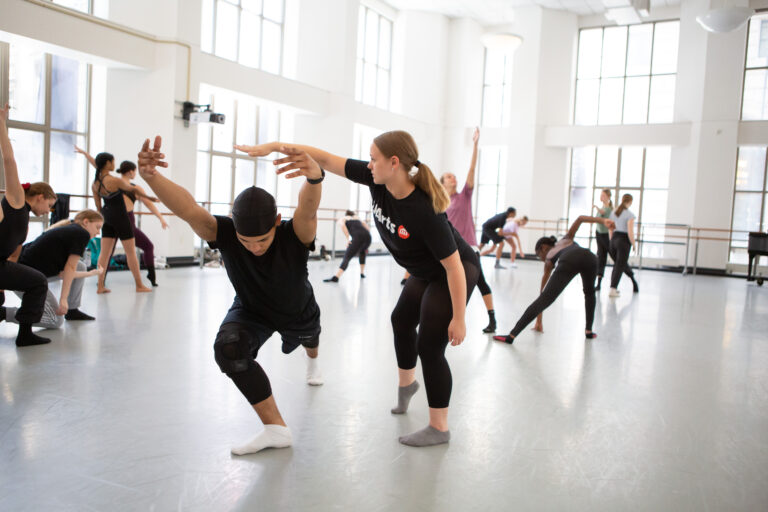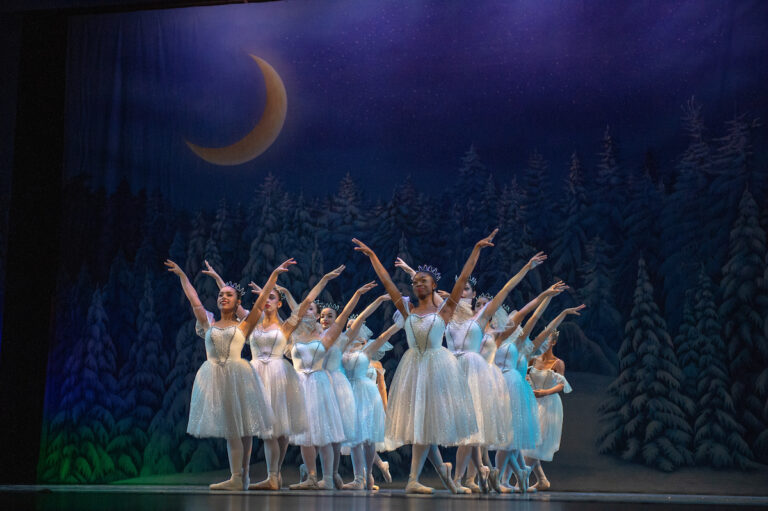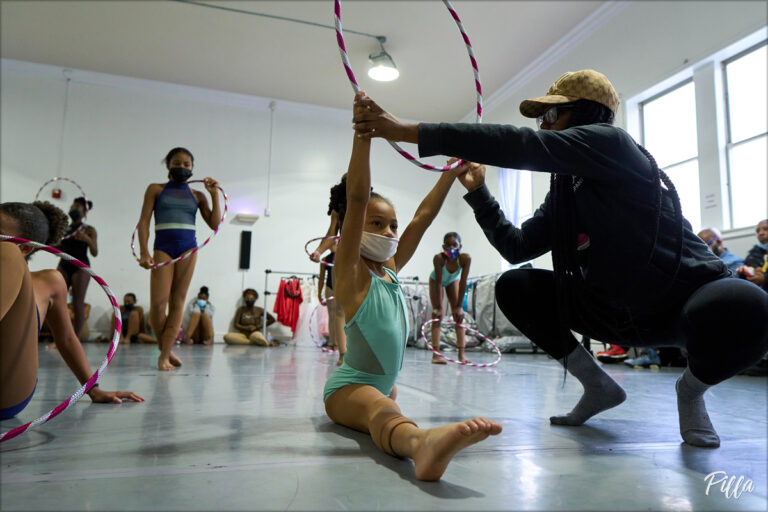
Making your dance studio an anti-racist space begins with education.
One concrete place to start: Be sure the resources and materials you provide for your students fall in line with your anti-racist values—and educate yourself and your staff.
We rounded up eight age-appropriate books for your students, and four must-reads for you and your teachers.
Educate your students.
Your studio library should include books that feature Black protagonists, and that address race, whether explicitly or implicitly. Bonus points if it’s a book about dance!
The Youngest Marcher: The Story of Audrey Faye Hendricks, a Young Civil Rights Activist
By Cynthia Levinson and illustrated by Vanessa Brantley Newton; ages 5–10
As the youngest known child to be arrested as part of the Civil Rights Movement, Audrey Faye Hendricks faced loneliness and even solitary confinement in her weeklong jail stay before her release—all done in support of the Children’s March in Birmingham, Alabama, in 1963.
Josephine: The Dazzling Life of Josephine Baker
By Patricia Hruby Powell and illustrated by Christian Robinson; ages 7–10
Performer and civil rights advocate Josephine Baker made her way from the shantytowns of St. Louis to opera houses in Paris before eventually performing at Carnegie Hall.
Bunheads
By Misty Copeland and illustrated by Setor Fiadzigbey, ages 5–8; coming in September
Newcomer-to-dance Misty is nervous to take her first ballet class, but she and her fellow bunheads end up putting on a show to remember by the story’s end.
Resist: 35 Profiles of Ordinary People Who Rose Up Against Tyranny and Injustice
By Veronica Chambers and illustrated by Paul Ryding; ages 8–12
Frederick Douglass, Nelson Mandela, Sojourner Truth, John Lewis, Reverend Dr. William Barber II and the other 30 people profiled in this book have one big thing in common: a commitment to fighting injustice.
My Story, My Dance: Robert Battle’s Journey to Alvin Ailey
By Lesa Cline-Ransome and illustrated by James E. Ransome; ages 5–10
Robert Battle’s journey began with a childhood spent in leg braces before he found dance. Battle eventually graduated from Juilliard and later became artistic director of Alvin Ailey American Dance Theater.
Trailblazer: The Story of Ballerina Raven Wilkinson
By Leda Shubert and illustrated by Theodore Taylor III; ages 6–9
Raven Wilkinson, the first African-American to perform with a major American touring ballet company, encounters racism and segregation in her tenure with the Ballet Russe de Monte Carlo before joining the New York City Opera.
This Is It
By Daria Peoples-Riley; ages 4–8
A young dancer, nervous about an audition, is challenged by her shadow to a dance-off on the streets of New York City.
Something Happened in Our Town: A Child’s Story About Racial Injustice
By Marianne Celano, Marietta Collins and Ann Hazzard and illustrated by Jennifer Zivoin; ages 4–8
Two families, one white and one Black, discuss a local police shooting of a Black man, encouraging children to ask questions about traumatic events in service of learning to identify and fight against racial injustice.
Educate yourself and your staff.
Arm yourself with the knowledge and tools you need to address racism with your students and promote a culture of anti-racism at your studio.
White Fragility: Why It’s So Hard for White People to Talk About Racism
By Robin DiAngelo; published 2018
Racism, it turns out, isn’t exclusive to “bad” people. DiAngelo argues that white fragility—fostered by an isolated environment of racial privilege in which white people can both “expect racial comfort and become less tolerant of racial stress”—precludes any meaningful cross-racial dialogue. She brings his points home by starting every chapter with examples, pulled from real-life situations, of white fragility in context. Most importantly, DiAngelo offers ideas for how to develop the necessary humility and white stamina required to constructively engage in racial justice work.
Why Are All the Black Kids Sitting Together in the Cafeteria?: And Other Conversations About Race
By Beverly Daniel Tatum; published 1997
Tatum, a clinical psychologist with a specialization in Black children’s racial identity development, introduces readers to the idea that in the face of racism, prejudice, discrimination and bias, individuals sometimes seek out others like themselves. It’s a way to secure a sense of self, she says, in a world intent on making Black children feel insecure—it’s an opportunity for them to flip the power dynamic and find social support. Tatum’s breakdown of racial dynamics in classrooms and communities offers strategies for facilitating productive discussions about racial issues.
How to Be an Antiracist
By Ibram X. Kendi; published 2019
Kendi’s memoir-like approach in describing different forms of racism lends support to his main point: Focusing on the concept of racism distracts you from the real enemy—inequitable policy—and instead asks you to focus on the people who are harmed by those policies. It’s not enough to not be racist, Kendi says. You must be actively anti-racist in order to successfully undo racist policy.
The New Jim Crow: Mass Incarceration in the Age of Colorblindness
By Michelle Alexander; published 2010
Alexander writes that despite the repeal of Jim Crow laws—those that enforced racial segregation in the late 19th century through 1965—Black Americans are still denied racial justice and civil rights. Today’s racial caste system, she says, is just designed differently. The U.S. criminal justice system disproportionately puts Black people in prison, which in turn reduces them to a second-class citizenship, one in which they cannot vote, serve on juries or avoid discrimination when it comes to housing, employment and educational access.




